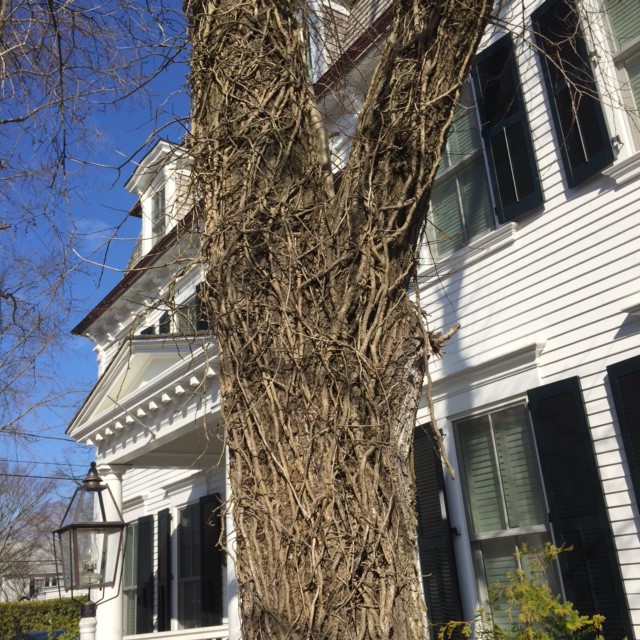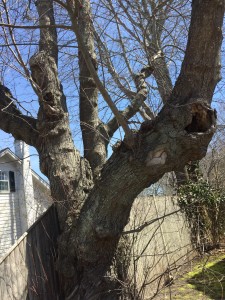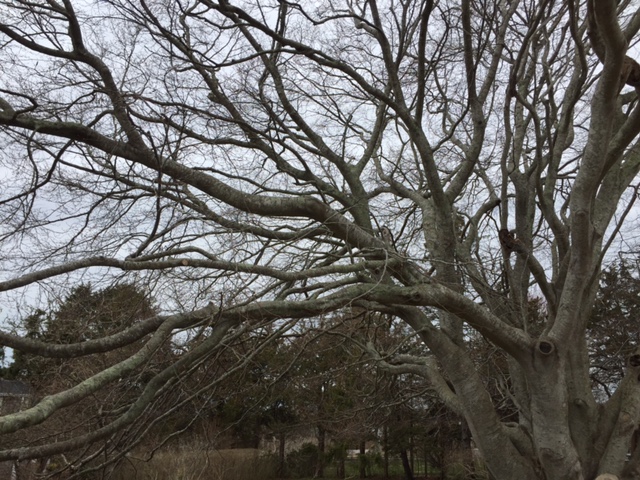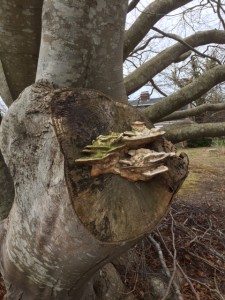I think that I shall never see…
Just kidding.
Kilmer was wrong, anyway. Trees are not poems; they are stories. Not short stories, not novels, but tales, epics, the story of a life.
The story of a tree.
Or, each tree has its own story, just like any individual life has a story.
And, of course, it’s the ones that don’t–or can’t–get told that are the most interesting. The most important.
Trees talk to you.
Look at this specimen.
Walking around Martha’s Vineyard (or anywhere in New England, or anywhere in the north), you can appreciate, with winter over but spring not yet sprung, the industry and will it requires just to survive.
These trees, most of which will soon be camouflaged by canopies of green, disguising the quirks the way clothes conceal, protect or embellish human bodies, are laid bare and, accordingly, not the least bit embarrassed about their battle scars.
The leaves tell a story of their own, or they represent the poetry of decay and return, the ceaseless cycle of death and birth, the kind of rebirth only Nature can entirely engineer.
But to see the flesh is instructive: those knots and the spines, twisting inside themselves, groaning while the wind buffets their branches, sagging but steadfast during the frosty nights, nourished and never overwhelmed by the water and light that assail it from above.
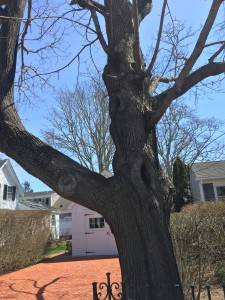 What can this old soldier tell us?
What can this old soldier tell us?
It was certainly there before those bricks were laid; before the street was paved; before the residencies all around it became exclusive and very extravagant seasonal properties.
This one spoke to me. It creaked, but more from satisfaction, it seemed, than exhaustion.
What is a creature like me, with less than five decades of survival to my credit, going to explain to this magnificent beast?
How many winters has this behemoth endured? How many animals, insects, bellicose humans and insufferable automobiles has it been utilized, assaulted or ignored by?
Here, examined closer, is a part of this tree you could never appreciate, or notice, even if you drove by it ten times every day.
Now that, I’d concede, is a poem.
Life within death; an outgrowth of inevitability. One part expires to facilitate the entry (or better, the improvisation) of something ancient that no one can claim to completely understand.
Here’s a story.
This saga, worthy of a screenplay (where is Faulkner, or better still, Hawthorne, when you need him?), speaks volumes about a town that understands–and acknowledges–the historic and cultural import of these precious resources. Nature is the gift that never stops giving, and it’s up to us to ensure that these invaluable gifts are not available at any price, no matter who is cutting down the check (in order to cut down the tree).
Speaking only for my immediate family, we’ve had four generations enjoy, and caress, our beloved Pagoda Tree. (And we are latecomers to the scene; this regal statesman was already more than a century old before my father and his father first stood beneath its imposing arms.) It’s gratifying to consider that it will be preserved and celebrated until its work here is, at last, completed.
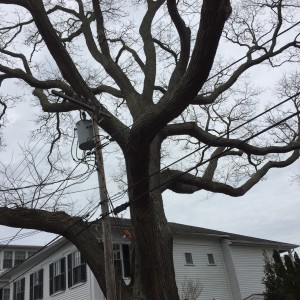
Let me tell you a story.
I’ve been coming to this island since I was a child, and during those many summers (and, in the last decade, springs and autumns) I’ve enjoyed, and done my best to savor, all the natural wonder on display. I’ve considered how, if I had to come back as any creature for a season, being a bird in Edgartown, during the summer, might be a proposition impossible to improve upon. I’ve relished the fact that deer, bunnies and even the much-maligned skunks have few if any natural enemies, and thrive in this sanctuary by the sea. I’ve delighted in the loquacious cries of the crows, even when they’ve (often, and with some small intent, it seems) awakened me from the type of slumber inconceivable in the city. I have, of course, cut my soles on the rocks and augmented my character by braving the blanketing green waves on South Beach, always bracing even in August.
And, not least, I’ve studied the trees that encircle these towns and envelop their houses. I’ve seen them as tidy rows of broccoli from above, arriving or departing on a too-small airplane; I’ve strolled beneath them early in the morning and, best, at dusk when the creatures they shelter during the day stir and size up their surroundings. As old, venerable, aesthetically delectable and expensive as so many of these old whaling houses remain, even they shrink in significance compared to the environment they were constructed to withstand. Growing older together, the white mansions and somnolent rows of shrubbery and timber serve as free reminders to anyone wise enough to listen: everyone and eventually everything will die. But other lives will come to supplant us, fulfill their destinies, continue that cycle, tell those stories.
True story: as I was taking one of these photos a truck rolled up to the stop sign, giving me ample opportunity to admire its immodest compendium of bumper stickers. The one that caught my not-quite-believing eye is the same one directly above (you can find everything on the Internet).
Trees are the answer.
Of course they are.
More importantly: what are the questions?
*This piece originally appeared in The Weeklings, 4/18/16.
